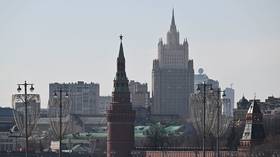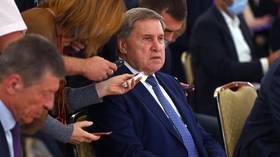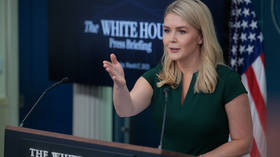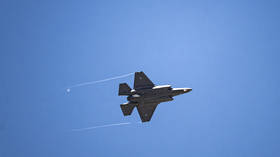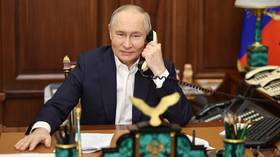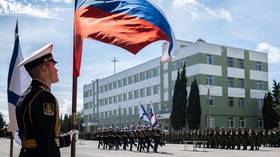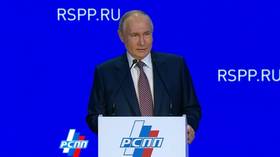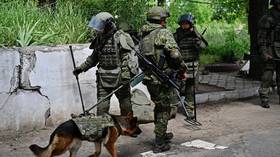A peace that no one came to terms with
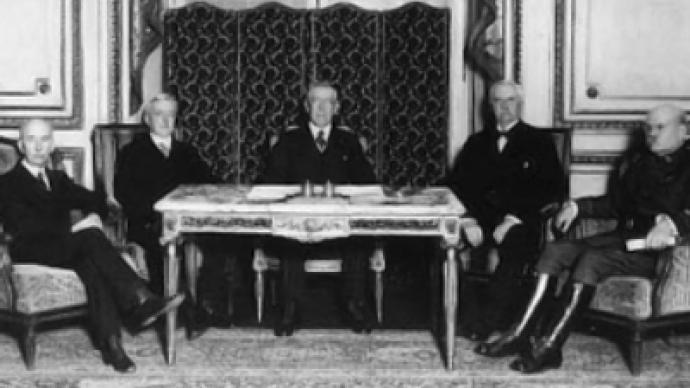
On June 28, 1919 – exactly ninety years ago – the Treaty of Versailles put a definitive end to World War I, but Russia had already bowed out of the war in August 1918 on humiliating terms.
Though the details of how and why did Russia enter the war are being fiercely discussed even today, it is obvious that World War I largely caused the downfall of the glorious Russian Empire, which slowly crumbled over the course of XX century.
Promising economic power in war for honor
Despite economic downfalls that haunted Russia in the XIX century, the early years of the XX century saw the Empire’s economy on the rise.
Hard as it may be to believe 96 years ago, Russia’s economy was in better shape than it is today. The only thing that Russia imported back then was, of all things, foreign investment. Meanwhile, Russian exports grew in gargantuan steps, doubling in 1910-1913.
There was no “BRIC” back then, only one big “R”.
Unlike India, Brazil and China, where foreign money was used on colonial principles, investment in Russia was used to benefit the country’s economy, which grew 12% in 1915 and 7% in 1916.
Russia was the only country on the planet whose gold reserves exceeded the actual amounts of paper money issued.
All of this may come as little surprise when one realizes that Russia’s population was bigger than it is today – 176 million (comparable with China’s 365 million) against the current 142 million (roughly a tenth of the Chinese today).However, in 1914 probably the most promising economy of the world chose to move from peaceful economic development to war for non-profit reasons.
Russia chose to respect its 20-year-old alliance with France and the seven-year-old alliance with Britain in their struggle against Germany and protect the brother state of Serbia, who was exposed to Austro-Hungarian aggression after the murder of Archduke Franz Ferdinand of Austria.
Harsh war realities
After the initial successes of 1914 – where Germany was forced to split its firepower in order to maintain fighting both France and Russia – fate turned to not be on Russia’s side.
Being insistently asked by France to march on prematurely, Russia proved to be largely unprepared for a war of its scale. In 1915 it had to retreat, losing Poland and Lithuania in the process.
Even though after a change of Commander in Chief (instead of Emperor Nicholas II, General Mikhail Alekseev assumed command) in May 1916 and that Russian forces made a surprise move practically sealing Austria-Hungary’s defeat in the war, it hardly improved the state of affairs at home.
What was worst of all – by then the war had already started to take its toll on Russia’s once booming economy.
As is always the case with big-scale wars, Russia’s entering into WWI created havoc among manufacturers. While some were granted enormous state military contracts, which they often failed to fulfill, others had to deal with investors that were scared stiff.
Market repartitioning was made inevitable by wartime corrections contributed to further slowing of the economy. In terms of technology, Russia’s isolation from its main partner for centuries – Germany – also didn’t help, nor did the approximate two million Russian casualties of war.
Untimely proletarian self-consciousness
As Russian industry started to stall (dropping 23% in the 1914-1917 period), the Empire’s economic development shrank and unemployment skyrocketed.
Each day of war cost the country 50 million roubles (to give some idea of the scale – a cow cost 5-8 roubles at the time), so Russia had to issue more and more paper money which, predictably, led to inflation. It was catastrophic to the Russians’ purchasing power, as the 1917's rouble cost about a half of what it did in 1914.
By mid-1915, the war crisis started to affect Russia’s agriculture, which seemed invincible just a year before.
The harsh downfall of welfare that followed the bright expectations of the early 1910s in conjunction with a very real perspective of hunger brought about a political crisis of unseen proportions.
Rapid changes in the government throughout the war alienated most of Russia's population from the government.
In addition, plagued by socialistic ideas that were gaining momentum, Russia’s workers started to protest. The number of demonstrations reached more than a hundred in a month. Meanwhile, the soldiers on the frontline were fraternizing with the enemy.
After unsuccessfully trying to resolve the political crisis Nicholas II abdicated in March 1917. A shaky coalition of political parties was formed, declaring itself the Provisional Government. Following the October Revolution it was replaced by the Bolshevik government.
One of its first legislative moves was the Decree of Peace, in which Vladimir Lenin pledged to do everything to achieve peace as fast as possible.
Germany and Austria-Hungary by then had lost Italy as an ally, but gained the Ottoman Empire and Bulgaria (just 38 years after it was liberated by the Russian Tsar) instead in a new military union called the Central Powers.
Governed by amateurs
Russia’s (or rather the Russian Soviet Federative Socialist Republic’s) separate peace negotiations were launched in December 1917.
Never did the immaturity, the enthusiastic naivety and the losing of firm ground after revolutionary successes by the Bolshevik government manifest itself as clearly and devastatingly as it did during their ill-fated attempts to sign some sort of peace agreement with the Central Powers.
Not yet even fully controlling the country in their hands – the civil war was still ahead.
In a sense, they did their best coming to the negotiation table, aiming to give up neither money nor territory, but their best was simply not good enough.
And if one wishes to discover the true reasons of Russians’ morbid, irrational at times, and maniacal infatuation with Joseph Stalin, one only has to look at his predecessors to see a group of people that had very vague ideas of what their national interests were, much less how to achieve those interests.
Memoirs of members of the German and Austro-Hungarian governments, who negotiated the peace with the Bolsheviks, clearly show the level of immaturity of Soviet government as do the following events.
After abandoning the negotiations in February 1918, the Soviet delegation made the ridiculous declaration of unilaterally ending hostilities. This led to the Central Powers seizing most of Ukraine.
In March the Treaty of Brest-Litovsk was signed on much worse terms. In just five months of “work” the Bolsheviks had lost a bunch of territories of the Russian Empire: Finland, Estonia, Latvia, Ukraine, Lithuania, and all Russia’s gains in the last Russo-Turkish War.
And even this treaty was soon violated by the Central Powers, who went on to capture even more Russian territories.
While Russia was dealing with civil war, its former allies secured the support of the US and inflicted a heavy defeat to Germany, resulting in dramatic territorial losses and a large contribution that were declared in a treaty signed in the Hall of Mirrors at the Palace of Versailles on this day exactly 90 years ago.
Ruben Zarbabyan, RT



